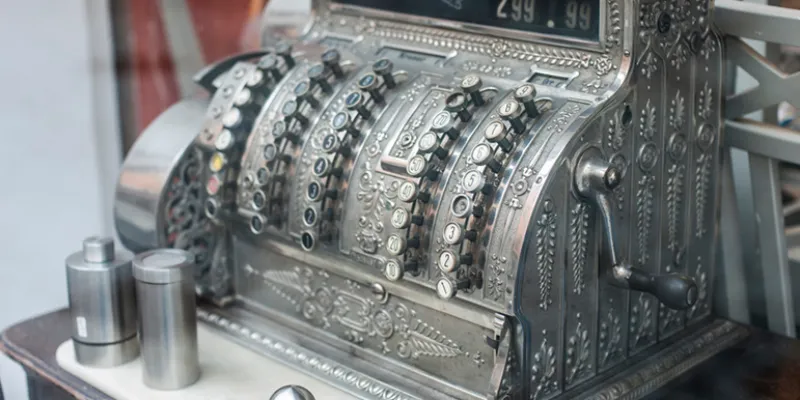Culture – an organisation’s biggest collateral!
Everyone talks of organisation culture, but very few understand how much of a deal breaker it is if leadership teams don’t focus on building a nurturing culture. Read more to understand culture more.
“We are convinced about your product”, said the investor. “We have understood that your customers love your product and your market is huge. But before we invest $500 million in your company, we want to be convinced that you have the capability to lead your team to build the organisation that will be both profitable and sustainable for many years to come. We want to be convinced that you have it in you to transition from entrepreneur to leader.
So, this is how we will establish your leadership qualities. We will narrate a story and at the end of the story, we will ask you a question pertaining to the story. If we like your answer, we will meet again to establish more of your leadership qualities. If we don’t like your answer, we will walk away. Each story will be around a particular theme. Today we will talk about organisation culture.
Culture is the most underrated collateral in an organisation. Like a number of management jargons, it is bandied about to describe all acts of omission and a few of commission. Statistics show that 90 per cent of attrition in organisations is on account of bad culture. The immediate reasons attributed are bad bosses, unreasonable work hours, unfriendly policies, and inconsistent hierarchies. But they are all elements of and add up to poor organisation culture.

What is culture? The simplest bare bones definition is the way things happen. In the context of the organisation, it is the way you greet each other. It is the way you dress. It is the spring in your step. It is the initiative you take by going out of your way to enable a customer. It is the way you sack someone who pads up his travel expenses - the very first time. It is the way you escort a visitor who seems lost. It is the way you talk with pride about the work you do, about your workplace that is nurturing, and about your colleagues who depend on each other to deliver stellar performance. It is the way your customers evangelise your brand. In short, it is the way things are.
Like a number of myths associated with organisations, culture too has its fair share. But the worst and biggest untruth is that culture in organisations is bottom up. No sir, it ain’t. We called it a collateral in our opening para and there is good reason for that.
It is a leadership collateral. In the early stages of the organisation, it is the behavior and values of the founding team that defines culture. As the organisation matures and the leadership team matures, culture not only defines vision but ensures that the vision itself is aligned to the org culture both in articulation and execution.
Let’s illustrate this with one of the best use cases, that of NCR Corporation.
NCR (originally National Cash Register) is an American company set up in 1884 to sell mechanical cash registers. The Patterson brothers who founded the company believed that for any business to succeed, it should have a passionate and committed sales force. So as early as 1893, they set up the world’s first sales training school to ensure that their sales team were trained in all aspects of customer facetime.

The Patterson brothers also created a sales team known as “American Selling Force’ which worked on commissions, and followed a templated sales pitch known as the NCR Primer.
It is amazing that in those days, they introduced a culture which emphasized not just selling a piece of machinery but designing a whole set of customer experience!
The stories are legendary about NCR’s sales culture. I remember reading about one such inspiring story. After World War II, when the NCR factory was bombed out, Patterson was seen climbing over the debris. At the far end, he found the salesman for that region also taking a tour of the debris. Patterson greeted the sales person by saying, I knew I’d find you here. And the sales person replied, how soon can we get the factory going? I have to meet my month’s sales quota!
Success, they say, is a fickle mistress. Between 1997 (when AT&T spun it off as an independent company) and 2005, when Bill Nuti took over its reins as CEO, it was a downward spiral for the company on all fronts – including its culture. As Nuti remarked, “We had a culture that had simply learned how not to grow.”
Funnily enough, NCR was making profits - but in the less desirable way. They were cutting costs that was literally chomping away at their cultural assets - training and development, innovation, R&D. Building a great company for the long term didn’t seem to be on leadership radar.
Nuti recognized the urgency to reinvent NCR and make it the iconic brand it once was – known for being meaningful to its employees and customers. He restored agility with a new management system that gave managers timely and relevant data to take faster and empowered business decisions. They spread their manufacturing footprint across the globe to be better positioned in the emerging markets. Teradata was spun out as it served a different marketplace and required different technology and infrastructure to sustain its success. And they moved headquarters to pave the way for better diversity - newer employees, ideas and practices.
In all, NCR restored the social contract with their people to rebuild the company’s culture and personality. The work environment was improved with tools and facilities to learn, train, execute and develop. The NCR University was rebuilt, even as the Great Recession raged in 2009, and investment made in online e-learning too. By 2011, more than 5,000 people were trained - and they registered about 230,000 registrants for online training.
By 2011, the company had registered record a 17 percent year-on-year revenue increase, and hit a peak in operating income, cash flow, and earnings per share.
Well Mr. Entrepreneur, quizzed the investor. What role did culture play in NCR’s early rise and again in their resurrection after 120 years?
This is a great example of culture at its multi-dimensional best, said the entrepreneur. Let me start with the most fundamental one. Both in its early years and during the early 2000’s turnaround, it started at the top. NCR’s leaders placed their signature of ownership on their organisation’s culture. They built it powerfully on a strong vision of being relevant to their customers and employees.
Secondly, the culture was beautifully crafted to integrate every single weave of business. This included infrastructure, organisation and management systems - and the social aspects of customer-centricity, skills, capabilities, behaviours and metrics. That is why in the beginning the sales person looked at his responsibility as one of creating a total customer experience, and not just selling a product. And that is why its revival was built on a unified whole of people, practices and diversity. Every employee was sure of how they needed to be positioned with respect to skills, markets and to be part of revenue contribution.
But what I like most about NCR is how they have de-mystified culture and brought it to the hand-reach of every organisation. Their ‘NCR Primer’ encompasses all aspects of selling across the stages of approach, proposition, demonstration, and close. It even goes down to motivating the discouraged salesman! I could easily build a culture of inspired performance and engagement around this!
You nailed it, didn’t you, smiled the investor. See you next week!
On to you readers. What is your culture mantra? Share with us what has worked for you.
Mail it to us before January 24, 201 to [email protected]
We will pick one winner, publish that story and you will get a chance to have a free half-hour mentoring session with Nandini Vaidyanathan.







